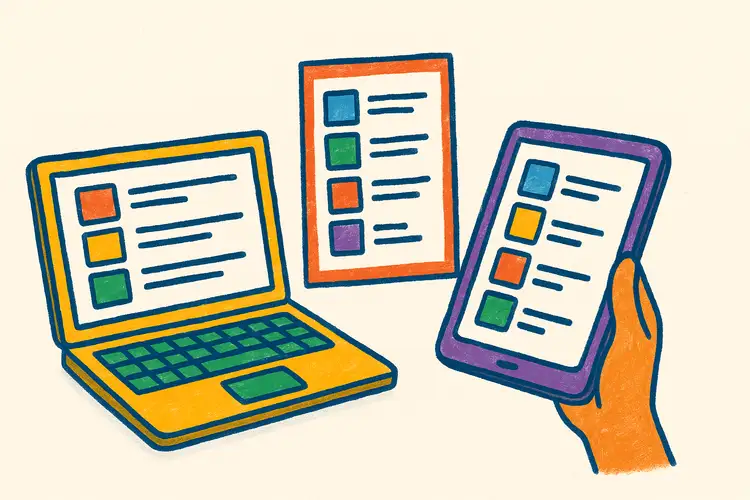Apps and Printables for Visual Schedules: Easy Tools for Families
Published {$created} by Carsten Blum
Visual schedules work best when they are easy to create and maintain.Some families prefer simple homemade printouts, while others benefit from professional apps with drag-and-drop icons and reminders.
The good news: there’s no single “right” way. What matters is finding the format that works for your child, your routines, and your daily life.

Benefits of Apps
Portable: Always with you on phone or tablet.
Customizable: Add photos, icons, or voice prompts.
Interactive: Children can tap to mark tasks as done.
Timers and notifications: Helpful for transitions and time limits.
Popular types of apps include:
Daily planners designed for children
Visual timers combined with routine checklists
Communication and support apps for autism/ADHD
Benefits of Printables
Simple and tangible: Easy to hang on a wall or fridge.
Low cost: Can be made at home with paper, scissors, and tape.
Custom look: Parents can design to fit their own routines.
Child involvement: Kids can help cut, color, or arrange the cards.
Printable schedules can be:
Routine strips for morning or bedtime
Daily or weekly charts for school and home
Magnet boards or Velcro systems for easy rearranging
How to Choose the Right Format
Consider your child’s age and skills – younger kids may respond better to large, colorful printouts.
Think about portability – do you need the schedule at home only, or also on the go?
Decide on flexibility – apps allow quick changes, while printables are stable and predictable.
Test both – many families find that using both formats works best.
Combining Apps and Printables
Some families use both approaches together:
A printable schedule at home for morning and evening routines.
An app on a phone or tablet for school, therapy, or travel.
This way, children get the security of a visible routine at home and the convenience of a digital schedule outside.
Tips for Success
Keep it visual: Use clear icons, not just text.
Start small: Begin with one or two routines.
Stay consistent: Use the same symbols across formats.
Adapt over time: Update as your child grows or routines change.
Summary
Visual schedules can be as simple as a homemade chart or as advanced as a mobile app.Both apps and printables make routines visible, reduce stress, and give children more independence.
Next step: Try starting with a simple printable routine, and later experiment with an app to see what works best for your family.